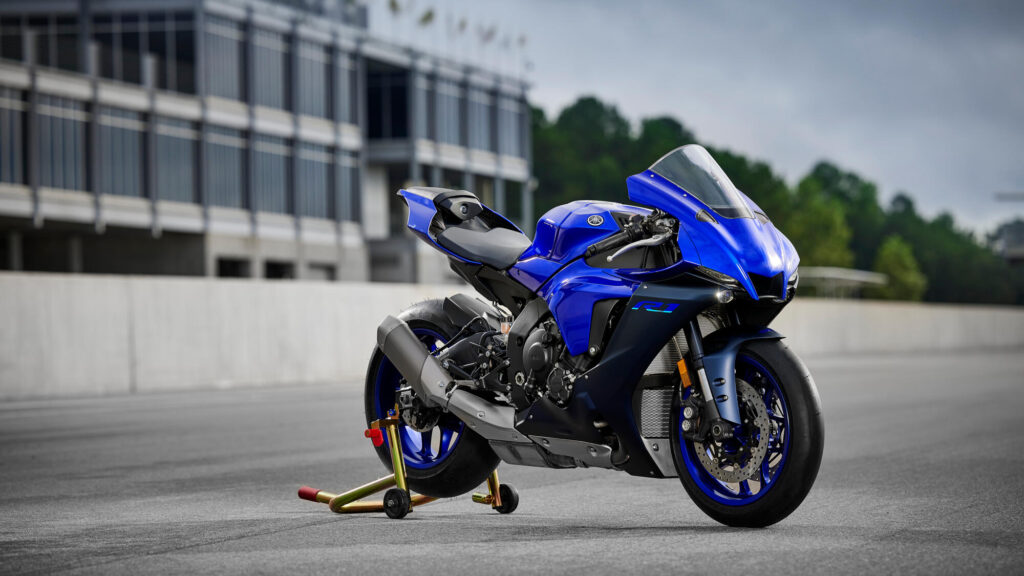In the world of sportbikes speed is often the ultimate benchmark of performance. For motorcycle enthusiasts and racers alike, the top speed of a bike can be a defining factor in its appeal. Enter the Yamaha R7, a new player in the mid-capacity sportbike arena. Positioned as a bridge between the YZF-R3 and the high-octane YZF-R1, the R7 has garnered attention for its impressive specs and performance. But how does it fare when it comes to top speed? Let’s dive into what makes the R7 tick and explore its top speed capabilities.
The Yamaha R7: A Brief Overview
1. The Evolution of Yamaha’s Sportbike Lineup
Yamaha has long been known for producing high-quality sportbikes that cater to a range of riders, from novices to seasoned racers. The YZF-R7 is the latest addition to this lineage, designed to offer a thrilling ride that sits comfortably between the entry-level YZF-R3 and the more advanced YZF-R1. This mid-capacity sportbike aims to provide a balance of power, agility, and everyday usability.
2. Engine and Performance Specs
At the heart of the R7 lies a 689cc, twin-cylinder engine derived from the MT-07. This powertrain delivers a robust 73.4PS (approximately 72.3 horsepower) and 67Nm of torque. Unlike some modern sportbikes, the R7 doesn’t feature advanced electronics or rider aids but does offer an optional quickshifter for smoother gear transitions.
Key Specifications:
- Engine Type: 689cc, twin-cylinder
- Power Output: 73.4PS (72.3 horsepower)
- Torque: 67Nm
- Quickshifter: Optional
The absence of high-tech electronics might be a point of contention for some, but it also means that the R7 maintains a more classic, raw riding experience.
Exploring the R7’s Top Speed
1. Achieving Top Speed: What the Numbers Say
When it comes to top speed, the Yamaha R7 is capable of reaching a maximum of 231 km/h. This puts it ahead of its main competitor, the Kawasaki Ninja 650, in terms of raw speed. However, it’s important to understand how this speed is achieved and what it signifies in the context of the R7’s overall performance.
Top Speed: 231 km/h
While this figure sounds impressive, the speedometer shows that the R7 gradually accelerates past 210 km/h, with the increase becoming less pronounced beyond 220 km/h. This gradual climb in speed can be attributed to the bike’s engine characteristics and aerodynamics.
2. Comparing with the Competition
In the realm of sportbikes, the Yamaha R7’s top speed places it in a competitive position but not necessarily at the forefront. For context, the R7’s predecessor, the YZF-R6, offers a higher top speed due to its more powerful engine and advanced features.
Competitive Comparison:
- Yamaha YZF-R6: Higher top speed than the R7
- Kawasaki Ninja 650: Slightly lower top speed compared to the R7
Despite the R7’s top speed being competitive, it is slower than the R6, which highlights a key difference between the models. The R7 is designed to be a step up from the R3 but doesn’t quite match the R6’s high-speed performance.
What Influences Top Speed?
1. Engine Power and Design
The top speed of any motorcycle is closely linked to its engine power and design. The R7’s 689cc engine provides a respectable power output, but it lacks the advanced features and higher displacement found in some of its more premium counterparts. The engine’s design, including aspects like aerodynamics and weight distribution, also plays a crucial role in determining top speed.
2. Aerodynamics and Design
Aerodynamics significantly impact a bike’s top speed. The R7’s design, while sporty, prioritizes a balance of performance and everyday usability. As such, it might not have the ultra-streamlined design that maximizes top speed but offers a well-rounded riding experience.
3. Rider Factors
Rider factors such as body weight, riding posture, and riding conditions can also influence a bike’s top speed. For optimal performance, the rider’s position can make a difference in how effectively the bike reaches and maintains its maximum speed.
Riding Experience and Practicality
1. The R7’s Riding Dynamics
While top speed is a key performance metric, it’s not the only factor that defines a motorcycle’s appeal. The R7’s handling, agility, and overall riding experience contribute to its value as a sportbike. With its balanced design and responsive handling, the R7 is well-suited for both spirited riding and everyday use.
Key Riding Attributes:
- Handling: Agile and responsive
- Comfort: Designed for both performance and comfort
- Usability: Practical for daily riding as well as spirited performance
2. Everyday Usability
One of the strengths of the R7 is its balance between performance and practicality. It’s designed to be an approachable sportbike for those stepping up from entry-level models, offering a mix of excitement and everyday usability.
The Future of the R7
1. Potential Upgrades
As with any motorcycle, there is always potential for future improvements. Yamaha may consider enhancing the R7 with additional features or performance tweaks in future models. This could include advancements in electronics, aerodynamics, or engine refinements.
2. Market Position and Competition
The R7 occupies a niche between entry-level and high-performance sportbikes. Its position in the market is influenced by its ability to offer a thrilling ride without reaching the extremes of the R6 or R1. The ongoing competition in the sportbike segment will likely drive further innovation and refinement.
Conclusion
The Yamaha R7 is a compelling mid-capacity sportbike that offers a balance of performance, usability, and excitement. With a top speed of 231 km/h, it stands out in its class but doesn’t quite match the high-speed prowess of its more advanced counterparts like the YZF-R6. The R7’s appeal lies in its well-rounded nature, making it an attractive option for riders looking to transition from entry-level models to a more performance-oriented machine. As the sportbike market continues to evolve, the R7’s blend of speed, handling, and practicality ensures that it remains a relevant and exciting choice for motorcycle enthusiasts.







